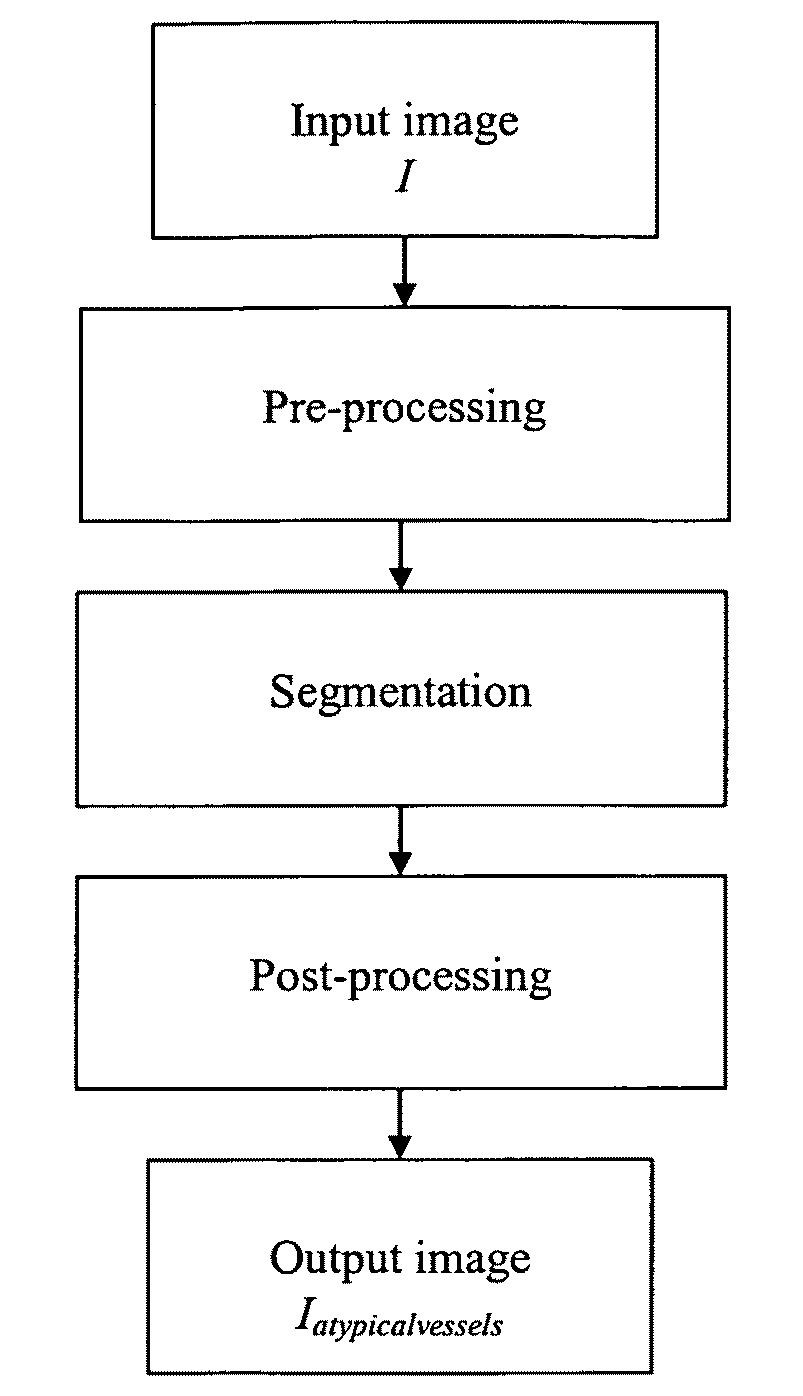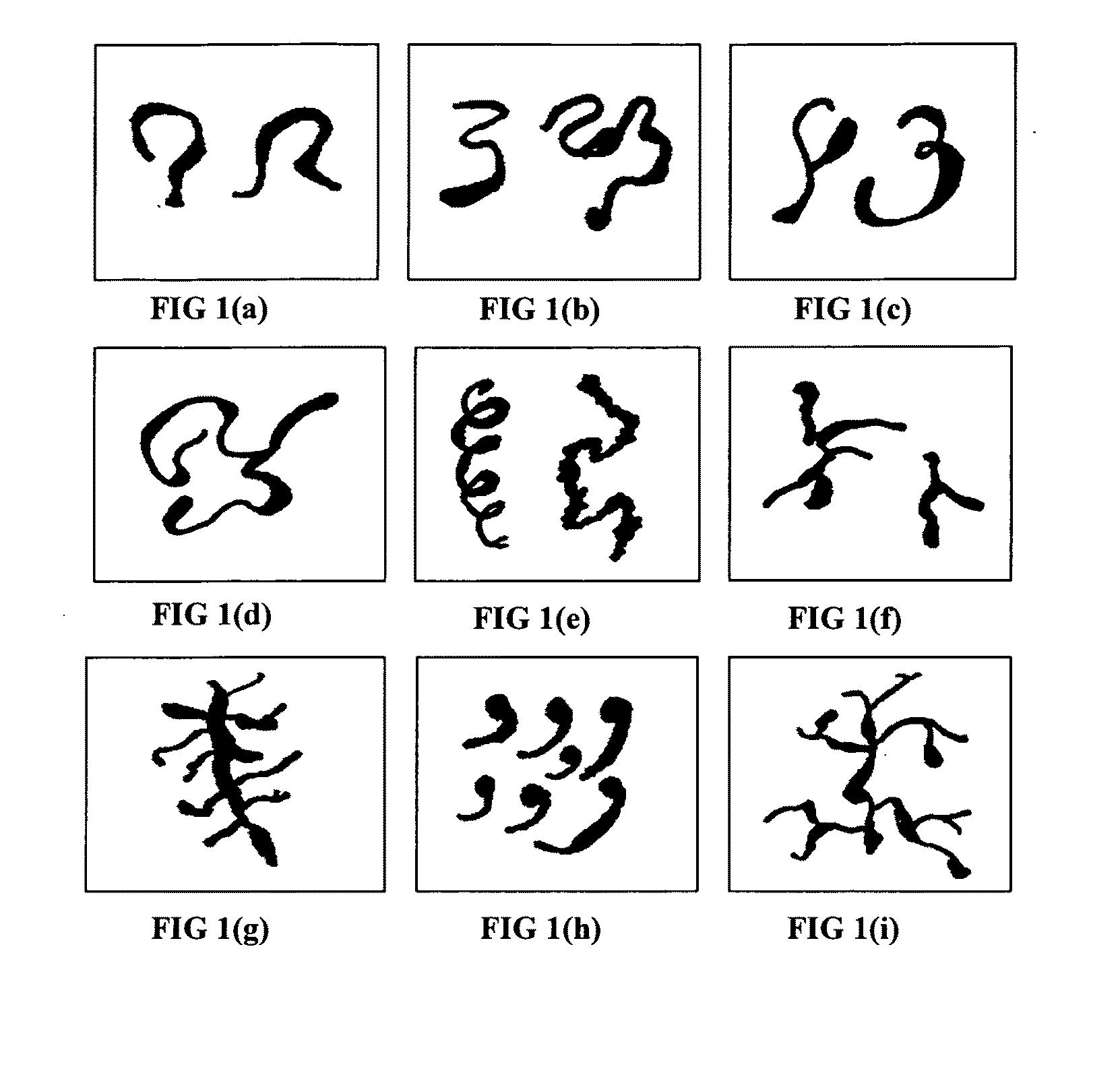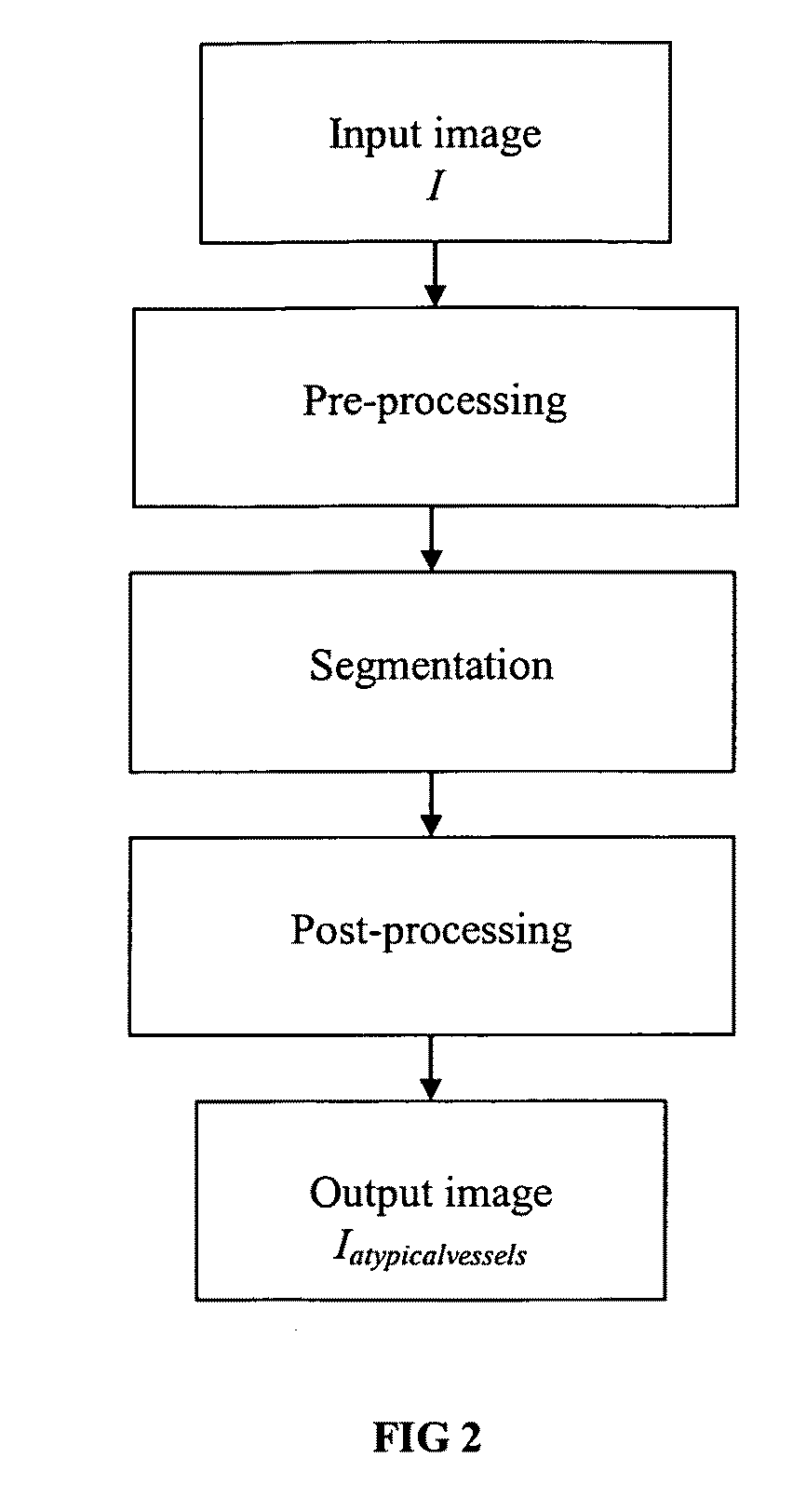Methods for detection and characterization of atypical vessels in cervical imagery
a technology of cervical imaging and atypical vessels, applied in the field of medical imaging, can solve the problems of random distribution or non-uniform distribution of atypical vessels, and achieve the effects of smoothing the image, suppressing high intensity components, and enhancing image contras
- Summary
- Abstract
- Description
- Claims
- Application Information
AI Technical Summary
Benefits of technology
Problems solved by technology
Method used
Image
Examples
Embodiment Construction
[0026]The presently preferred embodiment of the invention provides a systematic framework for the automated detection of atypical blood vessels in cervical imagery. A flowchart of the preferred embodiment of the invention is shown in FIG. 2. Due to the large variation of shapes, diameters, spacing and branching patterns of atypical vessels, a three-stage algorithm process is preferably implemented.
[0027]The atypical vessels detection of the presently preferred embodiment of the invention starts by collecting high-quality image data (digital images) of an organ (such as the cervix) in real-time during examination with a colposcope. A pre-processing stage is applied to the image data, which provides contrast enhancement of the original cervical image. The pre-processing stage conditions the image data for the segmentation stage by enhancing visualization of the vasculature in the image compared to the surrounding tissue. The second stage is the segmentation stage in which regions of i...
PUM
 Login to View More
Login to View More Abstract
Description
Claims
Application Information
 Login to View More
Login to View More - R&D
- Intellectual Property
- Life Sciences
- Materials
- Tech Scout
- Unparalleled Data Quality
- Higher Quality Content
- 60% Fewer Hallucinations
Browse by: Latest US Patents, China's latest patents, Technical Efficacy Thesaurus, Application Domain, Technology Topic, Popular Technical Reports.
© 2025 PatSnap. All rights reserved.Legal|Privacy policy|Modern Slavery Act Transparency Statement|Sitemap|About US| Contact US: help@patsnap.com



